You Can Feed Yourself
We have a number of major problems in the American food supply: chemical food additives, residual chemical pesticides, residual chemical fertilizers, genetically modified food and toxic heavy metals in the growing portion of food we import from overseas. All these problems follow from mass-production of food in the economy driven strictly by profit maximization. On an individual level we have lesser and lesser freedom of choice, but we still have one of the best solutions available: to grow our own food or, at least, to cook for ourselves as in good old days. Below is an article published by a friend of mine a while ago. I do believe it worth being published today again.
August 31, 2011
I guess it would be appropriate to give you a little insight into my educational/health background. My interests in mathematics and chemistry started from an early age. I fondly remember the science projects my dad (EPA chemist) and I did as child. They sparked my curiosity in science as well the ability to question certain things. However, I was “raised” by my mother, at top mathematician who instilled a great deal of critical thinking deep inside me. After high school I went to the University of Southern Mississippi where I majored in chemistry and minored in mathematics. After undergraduate I continued my pursuit for higher education where I received a Doctorate of Philosophy in the field of analytical chemistry. After graduate school I began working for a company that is trying to find a cure for Alzheimer’s disease. During my first year I began to experience a great deal of heartburn/acid reflux, which led to esophageal restriction. This required a gastroenterologist to go in and literally “stretch” my esophagus so that food would pass unrestricted. I asked my gastroenterologist what I could do to but the advice on food consumption was limited. It was simply put like this “you should be fine, just take this little purple pill…” that pill was Nexium. After about 6 months on Nexium I decided to stop and make real changes to my “American” diet.
My family gave me a great deal growing up. They fed me well as I burned it off quickly. I was 6 foot by junior high so it was “eat anything or waste away”. Food always tasted great to me and they fed me a variety of foods. There was never a time when I went to bed hungry, which is a true blessing in this world. I remember fondly of coloring Easter eggs, eating snow cones by the pool and a variety of candies containing a great deal of my unfriendly azo-dyes. The one thing that I remembered is my MIND telling me “this tastes good”, never did it once say “what is in this”. We are products of our environment, and this continues until one transcends.
My goal in life is to simply transcend. To me, transcendence is transformation, and transformation can only be achieved by doing what is unnatural. Animals cannot do this, only humans. To do this, at least in my view, one must remain indifferent to what is considered “ok”. It is indifference to the fears and doubts of society’s normalcy.
Why I built a garden?
So can you imagine why I built a garden? Have you looked at your neighborhood supermarket lately? And no I don’t mean farmers market, those ROCK!!! The food we buy in the supermarkets and restaurants are (to a greater extent) deplorable nutritionally when compared to food of our ancestors. I like to ponder on what life was like for my ancestors, especially in the month of May. Mothers day is such a great time to thank our mom for what she has done (see www.naturalawakeningsOKC.com (May 2011, pg 45), to reflect on what she gives us and most of all, WHERE WE COME FROM. Reconnecting inwardly.
So yeah, I built a garden, and not some little ass garden. I wanted something that was to be a lasting piece of landscape with the friendliness my granny might like. This post is to write a mix of how I did it and also what glorious fruits it produced. The ingredients are few, just a little water, sun and patience. I hope you will sit back, and let the story of how you too can feed yourself be told in captions and pictures.
The very first thing I did was to decide if I wanted a 3 season garden or a 2 season garden. I decide to go with spring/summer garden do to material cost as well as aesthetics. I also had to decide what size as well as where I wanted the gardens to be placed in my backyard. Picture 1 is the area of my yard I chose to have for the location. This was decided on because two reasons: 1) the location provided optimal morning/day sunlight but “some” shade from the hot afternoon sun, 2) this area of my yard is mostly unused. In my opinion, grass was brought in by the rich and gives little in the way of O2 replacement. Everyone is different, but I take no pleasure in mowing grass or paying someone to mow it. Once the area was planned, my good friend (Jim Hollinger) and I marked off two of the gardens, which would be 48 ft long by 4 ft wide (picture 2). The width of four feet was chosen because I read numerous places that anything larger can be difficult to tend or reach across.
I then went to Craigslist and searched for someone who had experience in building raised bed gardens. I found a local college student whose hobby was building gardens and asked for him to come out and take a look at the project. His labor was $15 an hour and he supplied all the tools needed to build the garden. Work began sometime in late February of 2011. Picture 3 shows the initial building of the garden. It was at this time that I decided to have 2/3’s of the garden be 1 foot deep with the remaining 1/3 being 1 & ½ foot deep. This provides an area for plants that require a deeper soil depth (peas, bean as examples).
The construction of the garden (made from 2 in by 6 in cedar wood from Lowe’s) took about 2 weeks. However, placement of the soil took an additional week. Before placing the soil in the garden I placed broken down cardboard boxes on the bottom of the raised beds to prevent weeds and grass from growing up through the garden. To place the soil in I rented what is known as a “buggy”, which greatly reduced some of the time it took to move the soil. I went with the “garden ready mix” from a local materials company called “Minick Materials”. It required 2 dump trucks to deliverer totaling 17 yards or roughly 19 tons of soil. You must use quality soil, if you don’t you are wasting your time and the effort to grow will be high. Pictures 4 and 5 show the raised bed with soil finally placed.
Don’t forget, soil will settle so a light soaking can “speed” up this process (pic 6). With the help of my friend Jim, I put a brick/mulch border around the garden so that one could easily work without having to get dirty and so I didn’t have to mow close to the garden (pic 7).
After the soil was in, I decided to put an irrigation (dripworks.com) system in so that I would not have to hand water. This also allows the garden to be both fertilized and watered while I took vacations. Pictures 8 & 9 provide some limited details on what this looks like.
I went with 3 rows of irrigation line for each of the two gardens. Each garden can be turned off as well as each row can be turned off. I went with a Rainmatic watering system because of the reliability and longevity.
Picture 10 is what the final version of the garden looked like. As you can see, bok choy, broccoli and mustard greens are now planted.
These plants were started inside as seedlings and then carefully placed out into the garden once the last frost of the year had passed. It was only 2 weeks later that I could finally enjoy and eat the fruits of my labor (pic 11).
About two months later, I could not eat all that my garden was producing and had to start giving food away to neighbors and friends (pics 12 & 13).
Mmmm, look at all those peas, onions, leeks and carrots!!! (Pics 14,15, and 16).
Finally, came time to plant my summer veggies. This included corn and cucumbers (don’t forget about companion gardening!) as well as beans, tomatoes, squash and peppers (pics 17 & 18).
I should point out I went strictly w/organic seeds because of ethical reasons. These seeds were purchased from the following vendors:
- Seeds of Change
- Johnny’s Seeds
- Kitazawa Seed Company
I know this is a short post, and I have left out a number of steps that were required to build and maintain the garden. As with any adventure, there is a learning curve. If you have any questions about building your own garden feel free to e-mail me at sprouts.beets@gmail.com
I had some colored food today, damn delicious carrots!
Category: American diet, Healthy diet

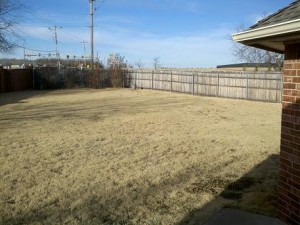
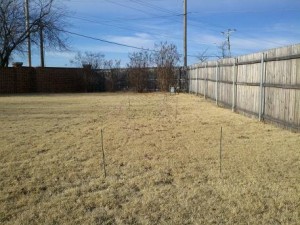
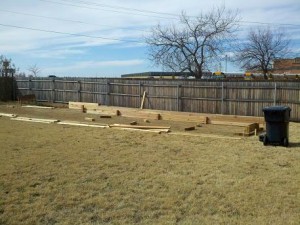
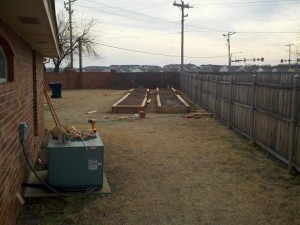
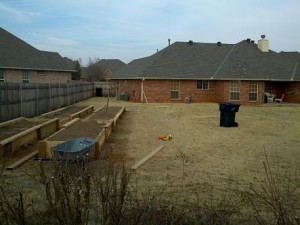
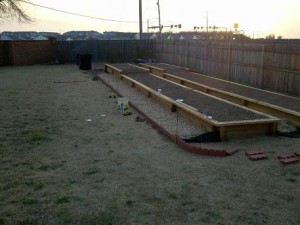
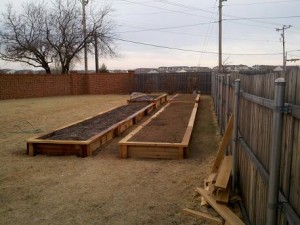
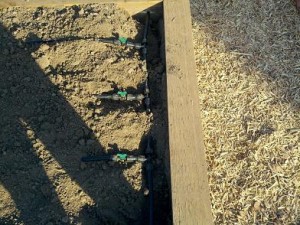
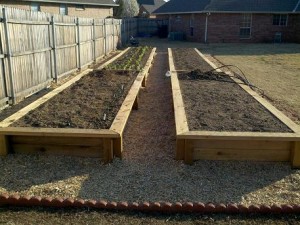
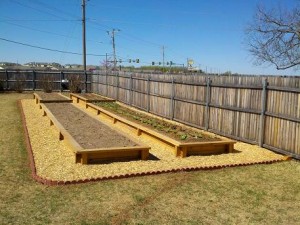
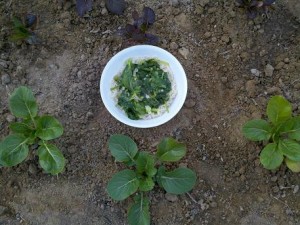
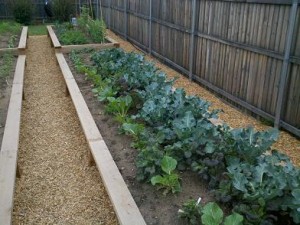
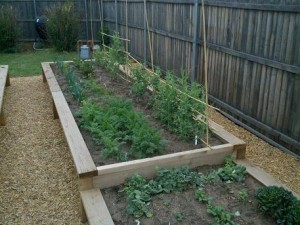
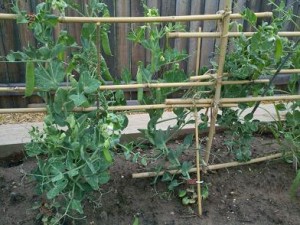
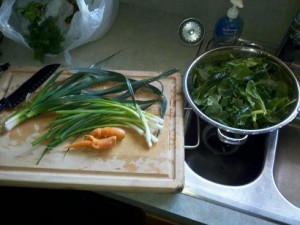
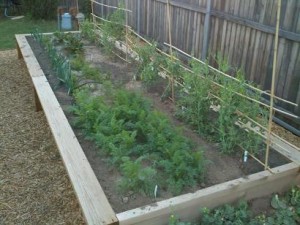
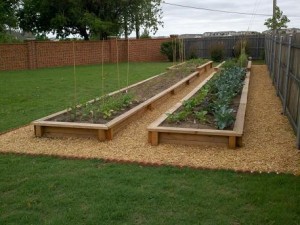
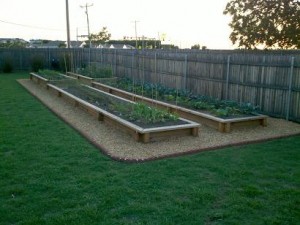




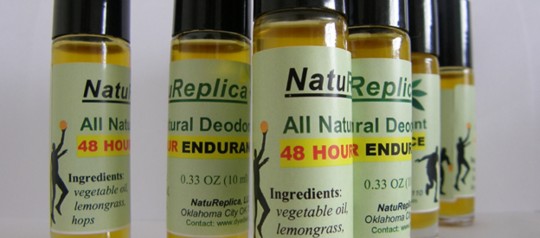
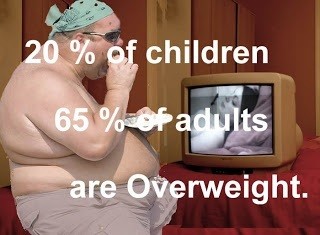
All natural soil amendments as well as homemade compost, do more than just fertilize the soil and growing plants. Most natural soil amendments have a total NPK rating sum total less than 20 (i.e. fish emulsion NPK = 5-1-1, compost NPK less than 4-4-4). Don’t be fooled by the numbers. Most P and K ratings only record the soluble available portions in the products. The N portion recorded could be either the soluble, insoluble, or total N portions as based on the company. The insoluble non-reported portion of OM is continuously consumed and broken down with the existing OM in the garden soil, thus raising the available soluble nutrients for further season crops.
Weed killer can be an effective way to get rid of any unwanted plants you may have growing in your yard. But weed killer is normally made up of those pretty potent chemicals. These chemicals may not be something you wish to have contaminating later plants, especially fruit and vegetable plants. So the questions “How long does weed killer last in the soil?” and “Is it safe to eat food grown in spots where weed killer has been sprayed previously?” can come up.
The gas trimmer edger will be operated on oil and gas while the electric trimmer will be using electric as its main source of operation. http://www.facebook.com/profile.php?id=627381619 Dry Fertilizers (106). If a potash producer like Mosaic feels so comfortable in doubling its dividend then the future is most likely brighter than we anticipate for other fertilizer Intrepid Potash trades at a forward price-earnings ratio of just over 14 with a price/earnings to growth ratio of 0.27 which shows that the stock might be Purple basil (purple leaves). Hozon Brass Siphon Mixer. Whether you have an urban garden container garden raised bed or grow micro greens indoors Garden Minerals vegetable plant food and tomato fertilizer is the perfect WONDERFOOD for all your organic gardening needs. Avenger Organics 2-3-1 Concentrate Fish Hydrolysate is an all natural highly nutritional protein fertilizer.